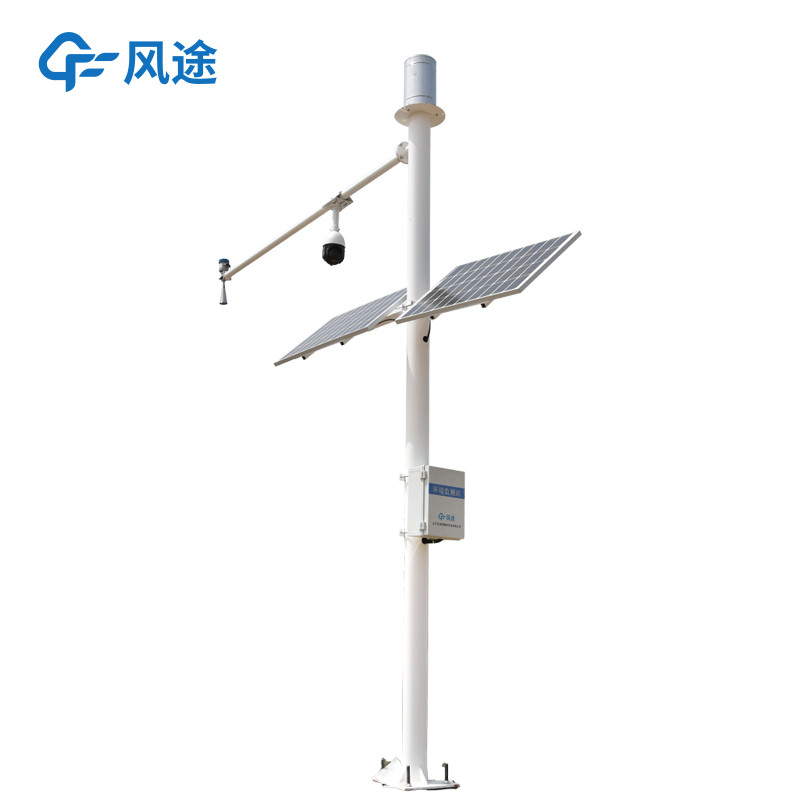Shandong Fengtu IOT Technology Co., Ltd
Sales Manager:Ms. Emily Wang
Cel,Whatsapp,Wechat:+86 15898932201
Email:info@fengtutec.com
Add:No. 155 Optoelectronic Industry Accelerator, Gaoxin District, Weifang, Shandong, China

Sales Manager:Ms. Emily Wang
Cel,Whatsapp,Wechat:+86 15898932201
Email:info@fengtutec.com
Add:No. 155 Optoelectronic Industry Accelerator, Gaoxin District, Weifang, Shandong, China
time:2025-02-11 09:27:15 source:Weather Station viewed:417 time
The River Level Monitoring Station, as a key product of the Intelligent River Monitoring Project, plays an extremely important role in the field of hydrological monitoring.
The flow velocity monitoring makes use of the Doppler effect of radar waves. When radar waves are emitted to the water flow, they interact with the objects in the water flow. Due to the movement of the water flow, the frequency of the reflected radar waves will change. By accurately calculating the frequency difference between the transmitted wave and the received wave, the water flow velocity can be precisely obtained. This method is not affected by factors such as whether the water flow is rapid or gentle, and whether the water quality is clear or turbid, ensuring the stability and reliability of the measurement results.
The flow rate monitoring combines water level data and uses the velocity - area method or the velocity - depth method. The velocity - area method calculates the flow rate by measuring the cross - sectional area and flow velocity of the water flow; the velocity - depth method also determines the flow rate based on the flow velocity data combined with the water depth information, achieving real - time and accurate monitoring of the flow rate.
The water level monitoring relies on a radar water level gauge. It measures the time difference between the emission and reception of radar waves, and then, according to the propagation speed of radar waves, can accurately calculate the water level height. Its measurement range is extremely wide, and the accuracy is very high, being able to adapt to various complex water level change situations.
The rainfall monitoring takes advantage of the scattering and reflection characteristics of radar waves on precipitation particles. Compared with traditional rain gauges, it avoids measurement errors caused by rainwater adhesion, evaporation, etc., greatly improving the accuracy of rainfall monitoring.
This equipment has high monitoring accuracy, can quickly and accurately obtain various data, and effectively reduces the errors brought by manual measurement. It has a remote monitoring function, allowing staff to monitor without being on - site, which greatly reduces labor costs and work risks. Moreover, it has strong adaptability, adopts non - contact measurement, and is not interfered by factors such as wind and temperature. The equipment is small in size and easy to install. The flow velocity and water level measurements use a planar array radar antenna with a built - in measurement angle function, further enhancing the convenience and accuracy of measurement.

Fengtu specializes in the research, development, and production of environmental online monitoring equipment. Its FT-WQX2 Ultrasonic Wind Speed Direction Sensor has been recognized by the market in the field of meteorological monitoring.This device is capable of continuously monitoring outdoor meteo...
Soil moisture monitoring techniques fall into three main categories: direct measurements, matrix potential measurements and non-contact indirect measurements.Direct measurements: moisture content is calculated by weighing and drying soil samples, or measured directly using instruments such as neutro...
rain gauge how does it work Falling rainwater is collected in a container and measured to determine the depth of precipitation occurring per unit area, usually measured in millimeters....
Ultrasonic wind speed and direction meter is an advanced equipment to measure wind speed and direction through ultrasonic waves. Its working principle is to utilize the characteristics of ultrasonic wave propagation in the air to deduce the wind speed and direction by measuring the difference betwee...